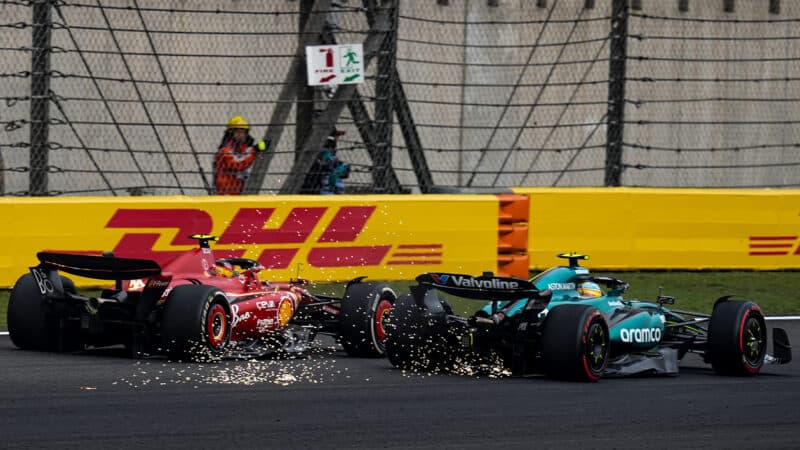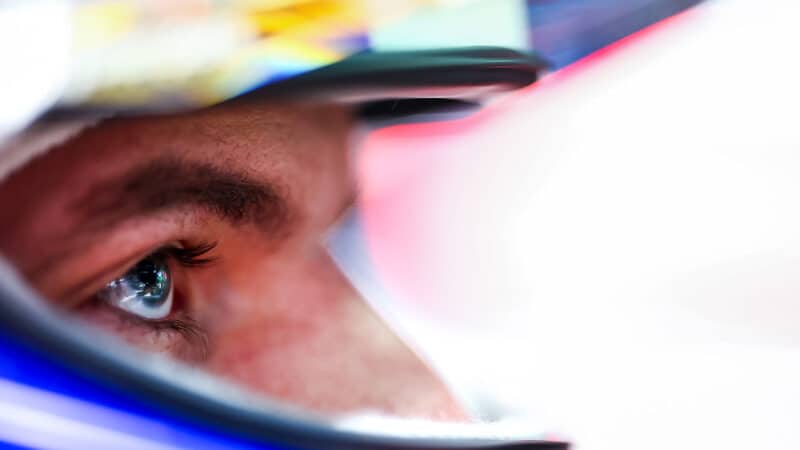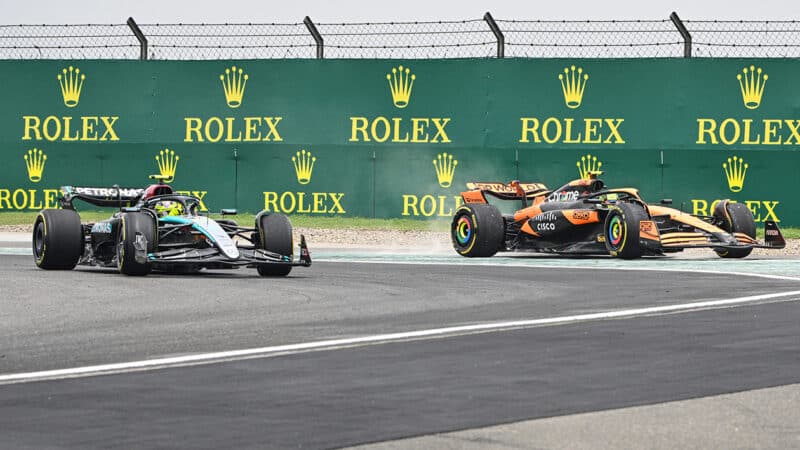The Ferrari was around 0.5sec per lap slower than Norris once both were on the hard tyre. Ferrari had set the car up with a lot of understeer, which it had expected would pay benefits in the race by protecting the rears from overheating even though it cost qualifying pace. It didn’t work out like that. However, Leclerc, like Norris, benefited from an opportunely-timed VSC (for Valtteri Bottas’s broken-down Sauber) to get a cheap pitstop. Carlos Sainz in the sister car had already pitted – and that 10sec difference in pitstop time was all that separated them at the end, in fourth and fifth.
They’d had a bit of a territorial moment into the first turn which had allowed George Russell through, but the Mercedes didn’t have the pace to maintain that and finished behind them in sixth. This was three places ahead of team-mate Hamilton who, with a desperate radically different mechanical setup, had started 18th and finished ninth in a car which understeered monstrously. His grid slot was due to nothing more than an error under braking in qualifying, which was some comedown after his race-leading sprint performance.
He was temporarily eighth, with Oscar Piastri seventh, but only because Alonso had made a third stop. On new tyres the Aston came back through the field, passing Hamilton and Piastri’s damaged McLaren. It was in chasing Hamilton that Alonso rescued his wild moment out the final corner. He’d starred in the opening few laps, passing Perez into the first turn and briefly giving chase to Verstappen. But no way could the Aston run at that pace without destroying its rubber. Hence the early stop onto his only set of hards which meant his strategy was ruined when the safety car came out only a few laps later. The late stop for new rubber helped him to fastest lap.

Mid-race change to soft tyres saw Alonso gain places — but he had to make another stop
Fred Lee/Getty Images
The only one of the five top team cars not scoring was Lance Stroll’s Aston Martin. He’d hit Daniel Ricciardo’s RB in the safety car restart queue, the RB in turn hitting Piastri. Stroll got a penalty, Ricciardo took a retirement and Nico Hülkenberg’s Haas took the final point. Zhou Guanyu became the first Chinese driver to take part in the Chinese Grand Prix, finishing 14th in his Sauber. A bigger crowd than had ever attended before cheered him to the hilt.
Like that, F1 re-acquainted itself with China.





